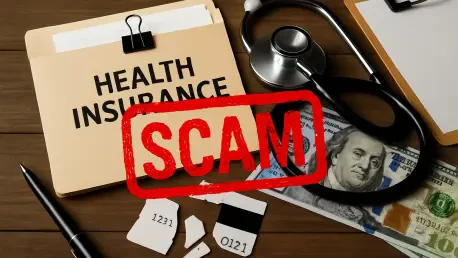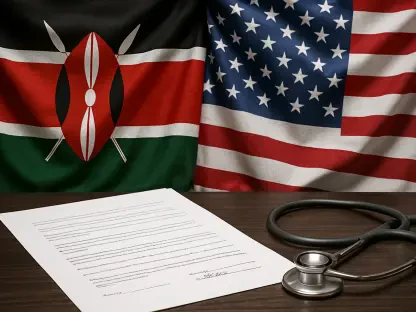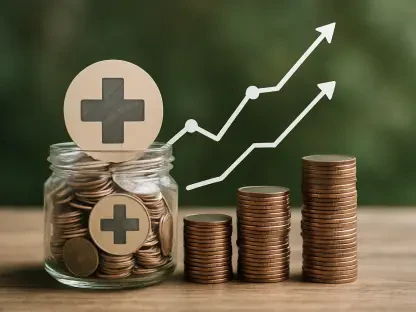As the calendar turns toward the 2026 open enrollment period for health insurance in New York, a disturbing trend is emerging that threatens the financial and physical well-being of countless residents, and it demands urgent attention. Starting November 1, the NY State of Health Marketplace welcomes individuals seeking affordable coverage, but with this opportunity comes a surge of fraudulent activity designed to exploit the vulnerable. State officials, including Attorney General Letitia James and Department of Health Commissioner Dr. James McDonald, have raised the alarm about sophisticated scams targeting New Yorkers desperate for plans like Medicaid or Qualified Health Plans. These deceptive schemes not only jeopardize personal finances but also leave victims without critical medical coverage. This pressing issue demands attention as fraudsters capitalize on urgency and confusion. Exploring the nature of these scams, their devastating impacts, and the protective measures available reveals a critical need for vigilance during this enrollment window.
Heightened Risks in the Enrollment Window
The open enrollment period, spanning November 1 to December 15 for coverage effective January 1, 2026, marks a peak time for health insurance scams in New York. During these weeks, thousands of residents rush to secure or renew plans through the NY State of Health Marketplace, creating an environment ripe for exploitation. While public programs like Medicaid allow enrollment throughout the year with annual renewals, the tight deadline for commercial plans intensifies pressure on consumers. Fraudsters seize this moment, knowing that urgency can cloud judgment and make individuals more susceptible to deceptive offers. State officials have noted a significant uptick in scam reports during this period, emphasizing that the seasonal nature of enrollment acts as a catalyst for predatory behavior. Staying alert to suspicious communications and offers becomes paramount as scammers tailor their tactics to exploit the time-sensitive nature of securing health coverage.
Beyond the temporal constraints, the diversity of plans available adds another layer of complexity that scammers exploit. New Yorkers navigating options such as Child Health Plus, the Essential Plan, or Qualified Health Plans often face confusion over eligibility and processes, especially with potential tax credits at stake. Fraudulent actors prey on this uncertainty, posing as helpful advisors or official representatives to mislead consumers into hasty decisions. Reports indicate that many victims are unaware of the legitimate, free resources provided by the state, leaving them vulnerable to fake fees or phishing attempts. The convergence of tight deadlines and intricate plan details creates a perfect storm where even the most cautious individuals might fall victim. State leaders are urging residents to take extra precautions, such as double-checking the authenticity of any enrollment-related contact, to avoid being ensnared by these timely traps during the critical enrollment window.
Sophisticated Strategies of Scammers
Health insurance scammers in New York have refined their methods to appear increasingly legitimate, often impersonating trusted entities like the NY State of Health Marketplace. Common tactics include sending urgent messages claiming that coverage is about to be canceled or has already lapsed, instilling panic in recipients. Others dangle enticing bait, such as fake gift cards or monetary rewards, under the guise of needing to “update” account information, which is often a ploy to harvest personal data. These fraudsters also craft websites and phone numbers that closely mimic official channels, tricking individuals into divulging sensitive details or making payments for nonexistent services. Such strategies exploit both fear and trust, making it challenging for even savvy consumers to discern genuine communications from fraudulent ones. Recognizing these red flags is essential to avoid becoming a target of these cunning schemes.
Moreover, the psychological manipulation embedded in these scams amplifies their effectiveness, particularly during the high-stress enrollment period for 2026. Scammers often use aggressive language or tight deadlines in their communications, pressuring individuals to act without verifying the source. Some may even claim to represent federal or state programs, using outdated or misleading terms to sound credible while pushing for immediate payment or data sharing. This calculated approach preys on the natural inclination to resolve urgent issues quickly, especially when health care access is on the line. State authorities have highlighted that legitimate agencies never demand upfront fees or personal information through unsolicited calls or texts, a key distinction that can help consumers spot fraud. Staying informed about these manipulative tactics and maintaining a healthy skepticism toward unexpected outreach can serve as a strong defense against falling into these traps.
Devastating Fallout for Unwitting Victims
The consequences of succumbing to health insurance scams are profound, often leaving New Yorkers with significant financial losses. Victims may pay hundreds or even thousands of dollars in fraudulent fees or premiums, believing they’ve secured coverage through what appears to be a legitimate provider. When the deception is uncovered, the money is usually irretrievable, placing a heavy burden on already strained budgets. This financial hit is particularly harsh for low-income families or individuals seeking affordable plans through programs like Medicaid or the Essential Plan, who can least afford such losses. The ripple effects extend beyond immediate monetary damage, as the stress and time required to resolve these issues can further disrupt lives. Protecting personal finances by scrutinizing every health insurance interaction during the 2026 enrollment period is a critical step to avoid this harsh reality.
Even more alarming than financial loss is the lack of actual health coverage that results from these scams, posing serious risks to victims’ well-being. Without valid insurance, individuals are unable to access essential medical services such as routine doctor visits, emergency hospital care, or necessary prescription medications. This gap in coverage can lead to deteriorating health conditions, delayed treatments, and potentially life-threatening situations, especially for those with chronic illnesses or urgent needs. The dual impact of monetary loss and compromised health access underscores the severity of these fraudulent schemes. For many New Yorkers, the realization that they’ve been deceived comes too late, often when seeking care and discovering no policy exists. State officials stress the importance of verifying enrollment through official channels to prevent such dire outcomes and ensure that health care remains accessible.
State Initiatives to Combat Deception
In response to the escalating threat of health insurance scams, New York state officials are taking decisive action to safeguard residents during the 2026 enrollment period. Attorney General Letitia James and Commissioner Dr. James McDonald have issued clear directives, emphasizing that legitimate enrollment through the NY State of Health Marketplace never involves fees or unsolicited demands for payment. They caution against communications using outdated terms or pressuring for immediate action, as these are telltale signs of fraud. Free assistance from certified enrollment assistors, accessible via the official website (nystateofhealth.ny.gov) or helpline (1-855-355-5777), offers a secure alternative for navigating the process. Additionally, reporting suspected scams to the Office of the Attorney General at 1-800-771-7755 is encouraged to help track and combat these crimes. These proactive measures aim to empower consumers with the tools needed to protect themselves.
Further bolstering these efforts, the state is enhancing public education campaigns to raise awareness about scam tactics and available resources. Informational materials and community outreach programs are being rolled out to ensure that New Yorkers, regardless of background or plan type, understand how to safely enroll or renew coverage. Special attention is given to vulnerable populations who may be less familiar with digital platforms or more susceptible to intimidation tactics. By providing in-person support at local offices and multilingual resources, the state seeks to bridge gaps that scammers often exploit. This comprehensive approach reflects a commitment to not only react to fraud but also prevent it through informed decision-making. Residents are urged to take advantage of these trusted channels and remain skeptical of any offer that seems too good to be true or demands urgent, unverified action during the enrollment window.
Tackling Policy Misinformation Head-On
Amid the flurry of health insurance scams, fraudsters are also capitalizing on confusion surrounding health care policies to mislead New Yorkers in 2026. False claims about immediate regulatory changes or new requirements, which may not take effect until future years, are used to create panic and prompt rash decisions. For example, scammers might reference fictitious initiatives or misrepresent upcoming rules to convince individuals to pay fees or share data under the pretense of compliance. This exploitation of policy uncertainty adds a layer of complexity to an already challenging enrollment process. State leaders are countering these deceptive narratives by urging residents to seek clarification from official sources like the NY State of Health Marketplace rather than trusting unsolicited messages. Addressing this misinformation is crucial to maintaining consumer confidence and preventing fraud.
Additionally, the state is working to streamline communication about policy updates to ensure clarity for all New Yorkers navigating health insurance options. Regular updates through verified channels, including the official website and direct outreach from certified assistors, aim to dispel myths propagated by scammers. This effort is particularly vital for those enrolled in public programs like Medicaid, where annual renewals and eligibility criteria can be points of confusion ripe for exploitation. By fostering transparency around legislative timelines and program details, authorities hope to reduce the leverage fraudsters gain from uncertainty. Residents are reminded that legitimate policy changes are always announced well in advance through trusted platforms, not through random calls or texts demanding immediate action. Staying informed via credible sources remains a powerful shield against these policy-based deceptions during the critical enrollment period.
Building a Safer Future for Enrollment
Reflecting on the surge of health insurance scams targeting New Yorkers during past enrollment periods, it became evident that fraudsters had honed their deceptive practices to exploit urgency and confusion. The financial losses and lack of coverage suffered by victims highlighted a pressing public health concern that demanded robust intervention. State officials, through warnings and resources, took significant strides to protect residents by clarifying legitimate processes and providing free assistance. Their unified stance against unsolicited demands and fake offers helped countless individuals navigate the system safely.
Looking ahead to 2026 and beyond, fortifying consumer awareness remains a cornerstone of preventing health insurance fraud in New York. Residents are encouraged to habitually verify all enrollment-related communications through the NY State of Health Marketplace’s official channels and to report suspicious activity promptly. Leveraging free support from certified assistors can further ensure secure access to coverage. As scam tactics evolve, ongoing education and policy transparency will be vital in empowering New Yorkers to protect their finances and health, paving the way for a more secure enrollment experience in the years to come.









